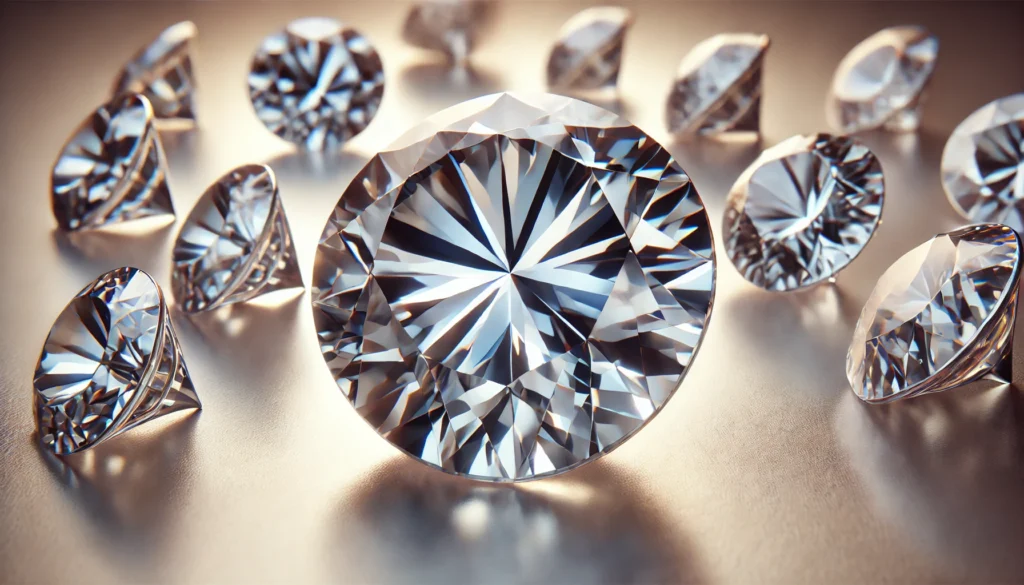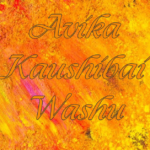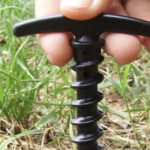Cubic zirconia (CZ) is one of the most popular alternatives to diamonds in jewelry. With its remarkable clarity, brilliant sparkle, and affordable price point, it has become a go-to choice for consumers seeking elegance without the high cost. However, there’s much more to cubic zirconia than just being a “diamond look-alike.” In this comprehensive guide, we’ll delve into the world of cubic zirconia, exploring its origins, properties, how it compares to other gemstones, its uses in jewelry, care tips, and much more.
What is Cubic Zirconia?
Cubic zirconia is a synthesized crystalline substance that imitates the appearance of diamonds. It is composed of zirconium dioxide (ZrO2) and is created in a lab, resulting in a flawless and colorless gem that closely resembles a diamond. However, unlike natural diamonds formed through geological processes over millions of years, cubic zirconia is engineered within weeks using advanced technology.
A Brief History of Cubic Zirconia
The existence of natural zirconium oxide was discovered in 1892, but it wasn’t until the 1970s that cubic zirconia emerged as a commercially viable gemstone. Initially, scientists experimented with the creation of synthetic crystals to mimic the optical properties of diamonds. In 1976, Soviet scientists succeeded in producing cubic zirconia crystals that were clear, hard, and visually similar to diamonds. Soon after, CZ became widely used in jewelry as a low-cost and ethically sourced alternative to natural diamonds.
Since then, cubic zirconia has been used in a variety of jewelry pieces, including rings, necklaces, earrings, and bracelets. Today, it remains one of the most popular diamond simulants, highly favored for its brilliance, versatility, and affordability.
How is Cubic Zirconia Made?
Cubic zirconia is produced through a complex laboratory process involving high heat and specific chemical elements. The process primarily uses zirconium dioxide powder, which is melted and then crystallized to form the gemstone.
The Process of Creating Cubic Zirconia
- Preparation: The process begins with pure zirconium oxide powder mixed with stabilizing agents like yttrium or calcium. These agents prevent the crystal from cracking during formation.
- Melting: The mixture is heated in a specialized furnace that reaches temperatures of up to 5,000°F (about 2,800°C). This high heat melts the zirconium oxide, allowing it to transition into a molten state.
- Crystal Formation: As the mixture cools, cubic crystals begin to form. This step is carefully controlled to ensure that the crystals grow without flaws or inclusions, resulting in the characteristic brilliance of cubic zirconia.
- Cutting and Polishing: Once the crystals have fully formed, they are cut into various shapes and facets, similar to diamonds. Professional gem cutters use precise techniques to maximize the gem’s brilliance and sparkle. After cutting, the stones are polished to enhance their clarity and reflectiveness.
Unique Characteristics of Cubic Zirconia
Cubic zirconia’s manufacturing process results in a gemstone that has unique characteristics. These characteristics differentiate cubic zirconia’s from other gemstones, particularly diamonds.
- Clarity: Since cubic zirconia is created in a controlled environment, it typically has flawless clarity, free from inclusions or blemishes.
- Color: CZ can be manufactured to mimic a completely colorless diamond, known as “D” on the diamond color grading scale. Additionally, CZ can be produced in various colors, including yellow, pink, blue, green, and more, by adding different elements during the manufacturing process.
- Density: Cubic zirconia is denser than diamonds. This density difference makes CZ heavier than a diamond of the same size.
Cubic Zirconia vs. Diamond: How Do They Compare?
Cubic zirconia and diamonds are often compared due to their visual similarities. However, they differ significantly in composition, properties, and value.
1. Brilliance and Fire
- Diamonds: Diamonds have a high refractive index of 2.42, giving them a distinct sparkle and brilliance. They also exhibit a characteristic known as “fire,” where light disperses into various colors as it passes through the stone.
- Cubic Zirconia: With a refractive index of 2.15 – 2.18, cubic zirconia’s displays less brilliance than a diamond. However, it often has more “fire” or rainbow-colored flashes due to its high dispersion rate. While this makes CZ appear very sparkly, it can sometimes be perceived as too “perfect” or artificial when compared to natural diamonds.
2. Hardness and Durability
- Diamonds: Diamonds are the hardest known natural material, ranking 10 on the Mohs hardness scale. This hardness makes diamonds highly resistant to scratches and suitable for everyday wear.
- Cubic Zirconia: CZ has a hardness of around 8-8.5 on the Mohs scale. While this makes it fairly durable, it is more susceptible to scratches and damage over time, particularly with regular wear.
3. Density and Weight
- Diamonds: Diamonds have a lower density, making them lighter than cubic zirconia stones of the same size.
- Cubic Zirconia: Because CZ is denser, a one-carat cubic zirconia’s stone will appear slightly smaller than a one-carat diamond.
4. Cost
- Diamonds: Natural diamonds are expensive due to their rarity and the complex processes involved in mining and cutting them. Even lab-grown diamonds, which are more affordable, still command a higher price than cubic zirconia’s.
- Cubic Zirconia: CZ is significantly more affordable, costing only a fraction of the price of diamonds. This affordability allows people to enjoy the look of diamonds without the financial investment.
5. Clarity and Flaws
- Diamonds: Most diamonds contain natural inclusions and flaws. Diamonds are graded on clarity, with flawless diamonds being exceedingly rare and expensive.
- Cubic Zirconia: CZ is manufactured to be flawless, with no visible inclusions. Its perfect clarity often distinguishes it from natural diamonds, which usually have slight imperfections.
6. Heat and Chemical Resistance
- Diamonds: Diamonds have a high heat resistance and can withstand exposure to various chemicals without damage.
- Cubic Zirconia: While CZ has some heat resistance, it can become cloudy or damaged if exposed to extreme temperatures or harsh chemicals.
Varieties of Cubic Zirconia
Cubic zirconia comes in various shapes, sizes, and colors. This versatility makes it a popular choice for different jewelry designs.
1. Shapes and Cuts
CZ can be cut into almost any shape imaginable, similar to diamonds. Common cuts include:
- Round Brilliant: The most popular cut, known for its exceptional sparkle.
- Princess: A square cut with sharp edges, giving a modern, elegant look.
- Emerald: A rectangular cut with step-like facets, offering a sophisticated appeal.
- Oval, Pear, and Marquise: Fancy cuts that add uniqueness to jewelry pieces.
- Heart: A romantic cut that is perfect for special occasions like anniversaries and Valentine’s Day.
2. Colors
By adding various metal oxides during the manufacturing process, cubic zirconia’s can be made in a spectrum of colors:
- Colorless: The most common and resembles a flawless diamond.
- Pink, Blue, Yellow, Green: Produced by introducing different elements during creation, offering alternatives for those who prefer colored gemstones.
- Black: A striking choice often used in modern and edgy jewelry designs.
Uses of Cubic Zirconia in Jewelry
Cubic zirconia’s affordability, versatility, and brilliance make it a favorite among jewelers and consumers. Here are some common uses of CZ in jewelry:
1. Engagement Rings
CZ engagement rings are popular for couples looking for an affordable yet stunning ring. They offer the beauty and sparkle of a diamond without the high cost. Additionally, CZ rings allow for larger center stones without breaking the bank.
2. Earrings
CZ is commonly used in stud earrings, hoop earrings, and drop earrings. Its brilliance adds a touch of elegance to both casual and formal outfits. CZ earrings come in various cuts and sizes to suit individual preferences.
3. Necklaces and Pendants
CZ is often set in necklaces and pendants, providing an affordable way to add sparkle to one’s neckline. The gemstone’s versatility allows for various designs, from delicate solitaire pendants to more elaborate pieces featuring multiple stones.
4. Bracelets
Tennis bracelets and bangles adorned with cubic zirconia’s stones are widely available. These pieces can range from simple, classic designs to bold, statement-making styles.
5. Fashion and Costume Jewelry
CZ is a popular choice in fashion jewelry due to its low cost and visual appeal. It can be found in a wide range of pieces, including cocktail rings, brooches, and statement necklaces, catering to different styles and occasions.
Caring for Cubic Zirconia Jewelry
Although cubic zirconia is relatively durable, it requires proper care to maintain its brilliance and clarity. Here are some tips for caring for CZ jewelry:
1. Regular Cleaning
Over time, CZ can accumulate dirt, oils, and residue, which can dull its sparkle. Clean CZ jewelry regularly using a soft, lint-free cloth and a mild soap solution. Avoid using harsh chemicals or abrasive cleaners, as they can damage the stone’s surface.
2. Avoid Harsh Conditions
Remove CZ jewelry before engaging in activities that expose it to harsh conditions, such as swimming in chlorinated pools, using household cleaners, or working with strong chemicals. Exposure to these substances can cause the stone to become cloudy or damaged.
3. Store Properly
Store CZ jewelry in a separate, soft-lined compartment to prevent scratches and contact with other jewelry pieces. Storing each piece individually helps maintain its surface and prevents accidental damage.
4. Professional Maintenance
For high-end CZ jewelry, consider professional cleaning and maintenance from a jeweler to ensure the stones remain secure and the metal settings are intact.
Advantages and Disadvantages of Cubic Zirconia
Like all gemstones, cubic’s zirconia has its pros and cons, which potential buyers should consider:
Advantages:
- Affordable: Offers the look of diamonds without the hefty price tag.
- Versatile: Available in various colors, shapes, and sizes.
- Flawless Clarity: Manufactured to be free of inclusions, providing a consistently brilliant appearance.
- Ethical and Sustainable: Lab-created, avoiding the environmental and ethical concerns associated with diamond mining.
- Easy to Replace: Due to its low cost, CZ stones can be easily replaced if lost or damaged.
Disadvantages:
- Less Durable: Softer than diamonds, making it more prone to scratches and damage over time.
- Less Prestige: Viewed by some as less valuable or desirable compared to natural gemstones like diamonds.
- Can Cloud Over Time: May become cloudy or lose its luster if not properly cared for.
- Artificial Appearance: Its perfection and high dispersion can sometimes make it appear “too perfect” or synthetic when compared to natural stones.
Conclusion
Cubic zirconia remains a popular and accessible gemstone for many jewelry enthusiasts. Its affordability, brilliance, and versatility make it an attractive alternative to diamonds, particularly for those on a budget or seeking ethically sourced gemstones. While it does not possess the same level of hardness or prestige as diamonds, cubic zirconia provides an excellent option for those who want the beauty of fine jewelry without the high cost.
Understanding the properties, care requirements, and uses of cubic zirconia’s can help you make informed decisions when purchasing jewelry. Whether you’re looking for an engagement ring, everyday earrings, or a dazzling statement piece, cubic zirconia’s offers an array of options that cater to various tastes and occasions. With proper care and mindful selection, cubic zirconia can provide a lifetime of beauty and sparkle.







